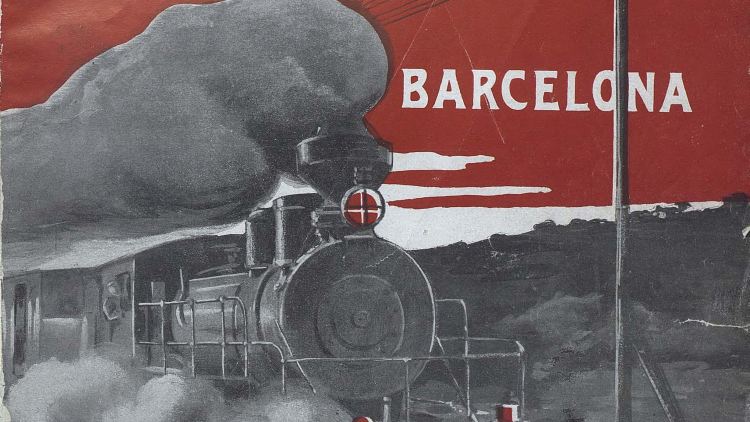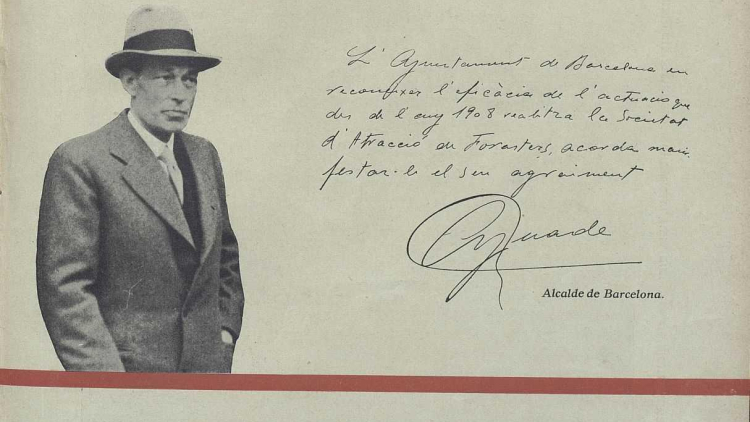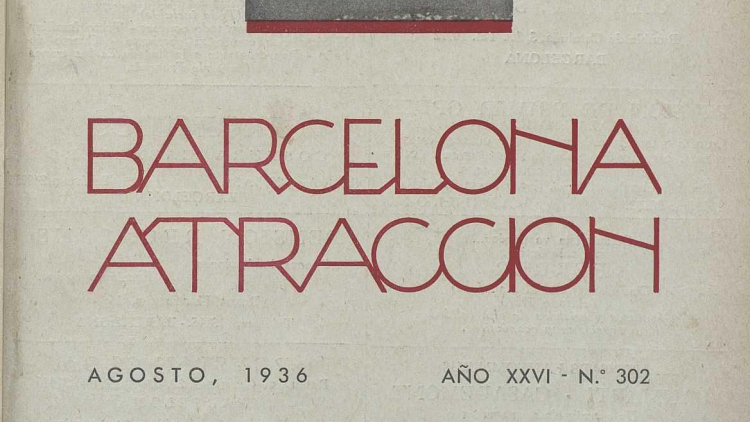Con el nombre de Sociedad de Atracción de Forasters (Syndicat d'Initiative) de Barcelona, el 1 de abril de 1908 se fundaba esta entidad, que tenía por objetivo promocionar el turismo en Barcelona y en el conjunto de Cataluña
Publication date of the document: 07/07/2021
Year of the original document: 1911
The organisation was founded on 1 April 1908, under the name of Societat d’Atracció de Forasters (Syndicat d’Initiative), with the aim of promoting tourism in Barcelona and in Catalonia in general. It offered “foreigners” —visitors who came from outside Catalonia— information on Barcelona's tourist and cultural offers. Its promoters wanted to contribute to the modernisation and cultural and economic enrichment of the city and country, through the driving force of tourism.
Its first Chair was the Mayor of Barcelona, Domènec Sanllehy. Other political representatives and members of the City Council were also on the company's board, including Manuel Ribé Labarta, the Master of Ceremonies, head of the Guàrdia Urbana police force and main promoter of the initiative. There were also leading figures from other sectors, such as industry, commerce, art, science, hospitality and restaurants. It was a semi-private organisation, but it had official and financial backing from the City Council and the Provincial Council. The city's first tourist information office was established in 1909, in the middle of La Rambla, at the present-day Nº 37 (at that time, Rambla del Centre, 30).
Between December 1910 and January 1911, the Society published the free magazine Touring review Barcelona: revista ilustrada de informaciones a los turistas. Later, from April 1911, the organisation converted the periodical into the monthly magazine Barcelona atracción: revista mensual ilustrada de informaciones a los turistas, which became the Societat d’Atracció de Forasters' official publication. Both titles are fully available in the Periodicals Library at the Arxiu Històric de la Ciutat de Barcelona.
A significant proportion of each issue was dedicated to adverts for hotels, restaurants, customs agents, department stores, workshops, etc., along with other useful information for travellers visiting the city. This included train timetables, service charges for cars, a cinema guide and other cultural opportunities, such as the programmes for theatres, the Liceu and the Palau de la Música. The number of pages dedicated to advertising increased considerably over the years, an indication of the increase in the number of Barcelona's visitors and tourist offers.
The magazine enjoyed contributions from recognised authors in various fields throughout its history, including the archivist Agustí Duran i Sanpere, the paleontologist Marià Faura i Sans, the archaeologist Joaquim Botet i Sisó, the historian Josep Maria Roca i Roca, the garden designer Nicolau Maria Rubió i Tudurí, the journalist Carles Rahola i Llorens, the Catalan folklore specialist Valeri Serra i Boldú and the architect Bonaventura Bassegoda i Amigó. The published texts were of a very high quality, but the idea was also to give considerable space to photography, which played a major role from the very beginning. One of the regular contributors was the photographer Lucien Roisin.
In addition to the magazine, the Society also published maps and the “Biblioteca de turismo”. a collection of monographs on Barcelona monuments and buildings, as well as those of other Catalan towns. There was a volume, for example, dedicated to Casa de l’Ardiaca and the Arxiu Històric de la Ciutat, written by Agustí Duran i Sanpere (March 1929). It is also worth noting, incidentally, that each issue in the 1920s contained a table listing the Society's member hotels, hostels guest houses and restaurants. The table included the name of the establishment and its minimum prices per day and room, full board or breakfast only, along with other information.
The last issue to be published before the Civil War was Nº 302, on 1 August 1936. It had been in publication for 26 years. The Societat d’Atracció de Forasters had taken part in the 9th Barcelona Trade Fair a few weeks earlier, from 30 May to 14 June 1936. Its stand displayed various images of monumental Barcelona after the International Exposition, along with a big slogan whose words would be, coincidentally, a sort of epitaph: “Atracció de Forasters. Barcelona, 1908-1936”.
Sure enough, the Atracció de Forasters did disappear after the war, but not the title Barcelona atracción. From 1945 on, the Provincial Board of Tourism reclaimed it in a new version of the magazine, which was published until 1954. This aim for continuity, despite the passing of the intervening post-war years, was clear from the magazine's continued number: the first issue published during this second era reprised the pre-Civil War number, as if the magazine from August 1936 —published just after the military coup d’etat— had never existed. The Arxiu Històric de la Ciutat's Periodicals Library fortunately keeps a copy of that issue.
Further information:
Anuari de la Societat d’Atracció de Forasters:
https://prensahistorica.mcu.es/es/consulta/registro.do?id=1029189
Butlletí de la Societat d’Atracció de Forasters:
https://prensahistorica.mcu.es/es/consulta/registro.do?id=1029188
Biblioteca de turisme de la Societat d’Atracció de Forasters:
https://ddd.uab.cat/record/210001
Extraordinary issue of the magazine Barcelona atracción, dedicated to the 25th anniversary of the Societat d’Atracció de Forasters, May 1933:
http://ahcbdigital.bcn.cat/hemeroteca/visualitzador/ahcb-d024470
Palou i Rubio, Saida [coordinator]. Història del turisme a la ciutat de Barcelona: destinació BCN, Arxiu Històric de la Ciutat, 2016.
http://w156.bcn.cat/cgi-bin/abnetopa?TITN=121940
Materials from the day event “Destination BCN. Història del turisme a la ciutat”:
Virtual exhibition “Barcelona a mà. Guies urbanes, 1776-2004”:





